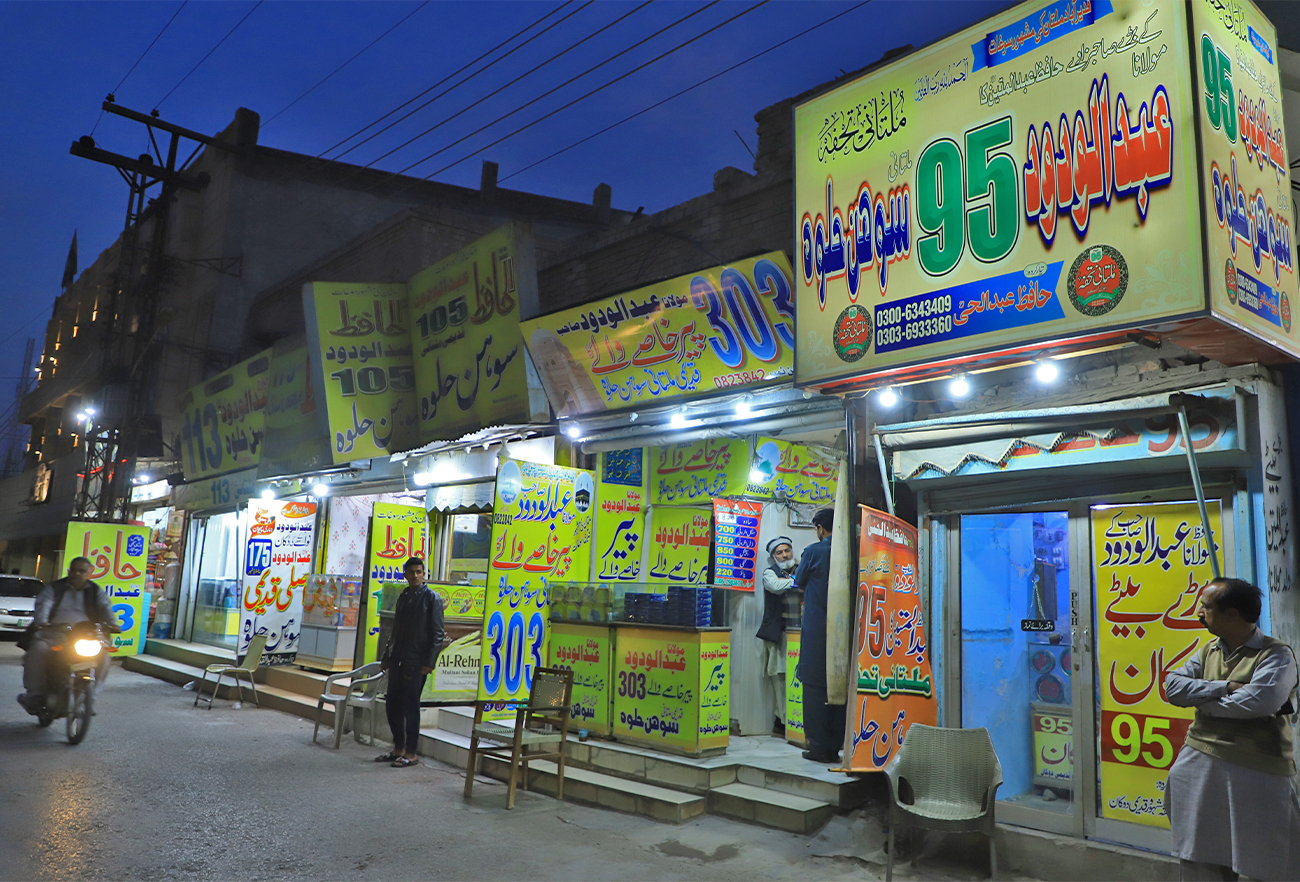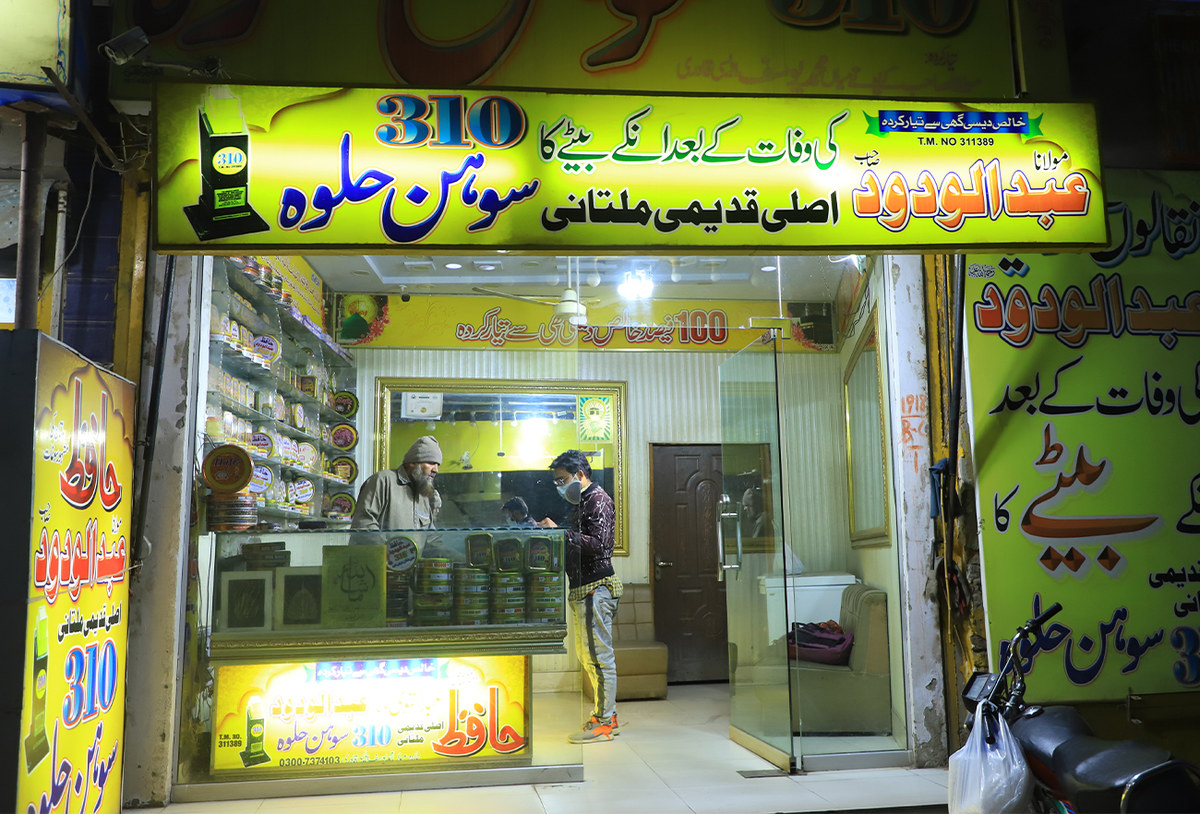MULTAN: Muhammad Fayyaz, 35, spends hours stirring this dark brown mixture inside a large metal container in a barely ventilated kitchen area. Once the mixture cools off and turns solid, other workers wrap middle-sized slabs of this sweetmeat, called ‘Sohan Halwa,’ into shiny tin boxes. But once a batch of the mixture is finished, there’s always more to take care of.
Multan, recognized as one of the oldest cities in South Asia that has seen its fair share of saints and conquerors, including Alexander the Great, is known for its Sohan Halwa delicacy.
The sweetmeat is one of the historic city’s most popular food items, aside from its mangoes that too are a favorite in many parts of the world, and is sold in various parts of the country as well as gifted abroad.
“It takes us a maximum of four to five hours to prepare this (Sohan Halwa),” Fayyaz explains, taking a momentary break from the stirring. “We mix milk with corn flour, sugar and cardamom, and prepare it with desi ghee.”

The picture shows Sohan Halwa at a shop in Multan, Pakistan, on February 13, 2023. (Photo courtesy: AN Photo/Niaz Hussain Jaffery)
The price of a Sohan Halwa depends upon its ingredients. A kilogram of plain Sohan Halwa (without any dried fruit) costs Rs800 ($3.07). One with cashew nuts costs Rs1,200 ($4.6) per kg, while another with walnuts added to it costs around Rs1,000 ($3.84).
Several shops in Multan sell Sohan Halwa. The most popular ones are Ahmad Sohan Halwa, Hafiz Ka Multani Sohan Halwa, and Al-Khair Sweets and Bakers. Hundreds visit these shops every day, with friends and families, to relish the delicacy.
It sells more in winters.

Tin boxes of Sohan Halwa are lined up in a shop in Multan, Pakistan, on February 13, 2023. (Photo courtesy: AN Photo/Niaz Hussain Jaffery)
“All things that are useful and beneficial for your health are found in this halwa,” Rashid Qazi, a 42-year-old caterer, told Arab News at Ahmad Multani Sohan Halwa and Falooda Shop.
“It (Sohan halwa) is consumed throughout the year, more in winters. It also [sells] in summers and has become a sign of [people] gifting it [to each other].”

Shopkeepers stand outside their shops in Multan, Pakistan, on February 13, 2023. (Photo courtesy: AN Photo/Niaz Hussain Jaffery)
Muhammad Farooq, a 24-year-old buyer, said dried fruit make Sohan Halwa taste even better and it is a popular delicacy among his friends and relatives in Saudi Arabia.
“Whenever we send (Sohan Halwa) to them in Saudi Arabia, and whenever they taste it, they say it is very good,” he said. “Whenever a relative of ours goes to Saudi Arabia for Umrah or Hajj, we always send this as a gift to them.”
Ahmad Ali, who works as manager at Ahmad Multani Sohan Halwa and Falooda Shop, agreed with Farooq.
“[Sohan Halwa] is very popular among Arabs in their countries,” Ali said. “[Pakistanis who are] working in Saudi Arabia, Dubai, or the UAE, whenever they visit Pakistan, their Kafeels (employers) tell them to bring it with them when they return.”

A customer buys Sohan Halwa from a shop in Multan, Pakistan, on February 13, 2023. (Photo courtesy: AN Photo/Niaz Hussain Jaffery)
As he helped himself to more of the delicacy, Qazi said Sohan Halwa is a “gift” of Multan: “It is made here with particular care and preparation and is very popular around the world as well.”

















